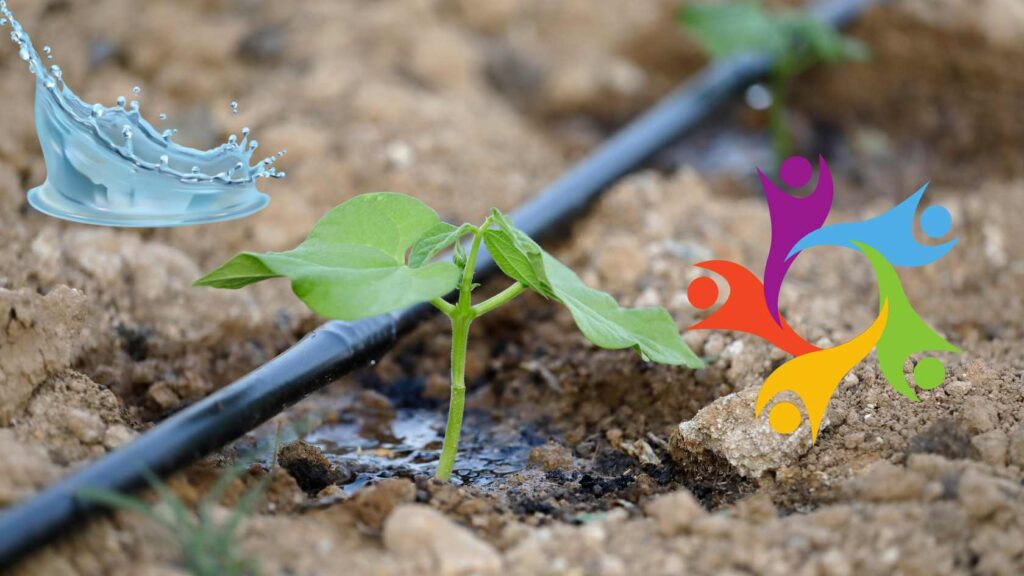Streamline your irrigation planning with our advanced drip network calculator. Achieve optimal water distribution in your irrigation system by accurately calculating the number of drip emitters, flow rates, and pipe lengths required. Our user-friendly tool saves you time and effort while ensuring precise results.
Discover the power of our Drip Network Calculator and take your irrigation efficiency to the next level. Try it now for hassle-free irrigation planning and superior water management.
Drip Network Calculator: Effortlessly Calculate Your Drip System Requirements

Adequate water plays an essential role in the production of crops and sustainability within the scope of agricultural practices. One method of giving prevalent water is showing a drop of water, also known as micro water. Planning and designing an effective drip network is essential to ensure appropriate water distribution.
This is the origin of a drop-in network calculator in this article. We will explore the concept of drops. Its benefits and how to use it effectively in your irrigation plan
Understanding Drip Network Calculators
A drip network calculator is a valuable tool that simplifies designing a drip irrigation system. It helps determine the number and spacing of emitters, pipe lengths, and flow rates based on specific parameters. Farmers and gardeners can obtain accurate and customized results by inputting relevant data into the calculator, saving time and resources.
Using a Drip Network Calculator
Specific data must be gathered beforehand to utilize a drip network calculator effectively. This includes information about the crop type, soil type, climate conditions, and desired application rate. Once the required data is collected, it can be inputted into the calculator, generating precise recommendations for the drip network design. These recommendations include emitter spacing, pipe diameter, and water flow rates. Interpreting the results allows farmers and gardeners to make informed decisions about their irrigation system.
Factors to Consider in Drip Irrigation Planning
Several factors must be considered during drip irrigation planning to ensure optimal system performance. The type of crop being cultivated and its water requirements play a crucial role in determining the design of the drip network. Additionally, soil type and infiltration rate influence the spacing and number of emitters needed. Climate conditions, such as evapotranspiration rates, help determine the frequency and duration of irrigation cycles.
Advantages of Drip Irrigation

Drip irrigation offers numerous advantages over conventional irrigation methods, making it a preferred choice for many farmers and gardeners. Let’s explore some of the key benefits:[1]
- Water Conservation: Drip irrigation is highly efficient regarding water usage. It delivers water directly to the plant’s root zone, minimizing evaporation and reducing water wastage. Drip irrigation can save up to 50% of water compared to traditional sprinkler systems.
- Enhanced Crop Yield and Quality: Drip irrigation ensures that each plant receives an adequate water supply by providing water directly to the plant’s roots. This optimized water distribution promotes healthy root development, improving crop yield and quality. Additionally, precise water delivery helps avoid overwatering or underwatering, which can harm plant health.
- Weed and Disease Control: Drip irrigation delivers water directly to the plant’s root zone, keeping the foliage dry. This reduces the favorable conditions for weed growth and the spread of diseases caused by excess leaf moisture. Drip irrigation contributes to healthier plants and higher crop productivity by minimizing weed competition and disease pressure.
Popular Drip Network Calculators
Now that we understand the benefits of drip irrigation and the importance of a drip network calculator let’s explore two popular calculators available:
- Calculator A: This user-friendly calculator allows farmers and gardeners to input specific data, such as crop type, soil type, and desired application rate. It generates customized recommendations for emitter spacing, pipe diameter, and water flow rates. Its intuitive interface and comprehensive results make it a go-to tool for irrigation planning.
- Calculator B: Designed for advanced users, this calculator offers additional features and functionalities. It incorporates complex algorithms to optimize the irrigation system design based on multiple parameters, including topography, soil moisture levels, and weather data. With its advanced capabilities, Calculator B provides precise and tailored recommendations for large-scale agricultural operations.
Also Read: JPMorgan Chase & Co: Exemplifying Trust and Progress in 2023
Also Read: How to Start Investing in Cryptocurrency | Start Profiting
Case Study: Using a Drip Network Calculator for a Vegetable Garden
Consider a practical scenario using a drip network calculator for a vegetable garden. Here is a step-by-step guide:
- Gather Data: Collect information about the vegetable crops you plan to cultivate, soil characteristics, and the local climate conditions.
- Input Data: Enter the gathered data into the drip network calculator, including the specific crop water requirements, soil type, and the average evapotranspiration rate in your area.
- Receive Recommendations: Based on the inputted data, the calculator will generate recommendations for emitter spacing, pipe diameter, and water flow rates. These recommendations will ensure optimal water distribution for your vegetable garden.
- Implement the Design: Follow the recommendations provided by the calculator to install the drip irrigation system in your vegetable garden. Pay attention to emitter placement and spacing, ensuring uniform water coverage throughout the park.
- Monitor and Adjust: Regularly monitor the performance of your drip irrigation system. Make necessary adjustments to emitter flow rates or system layout, if required, based on the specific needs of your vegetable crops.
Concludes
Drip irrigation is a highly efficient and sustainable method for irrigating crops and gardens. Farmers and gardeners can simplify the planning and design process by using a drip network calculator, ensuring optimal water distribution and improved crop productivity. Consider the advantages of drip irrigation, explore popular calculators, and apply the recommendations provided by these tools to create a customized and effective drip irrigation system for your specific needs.

